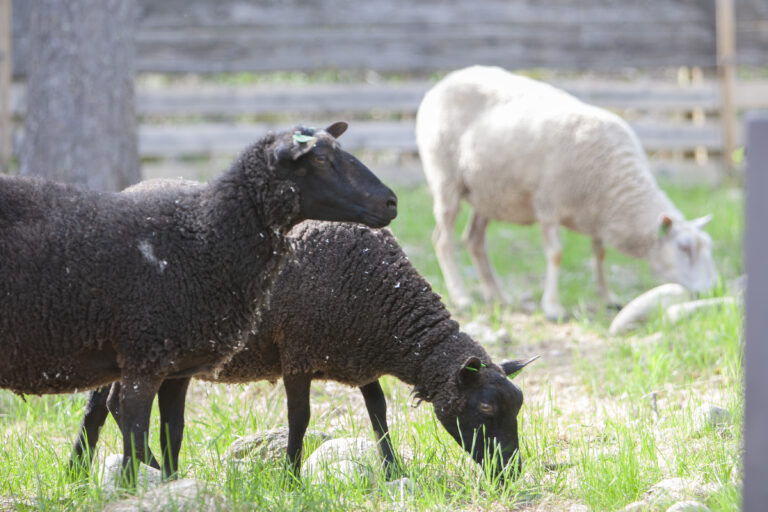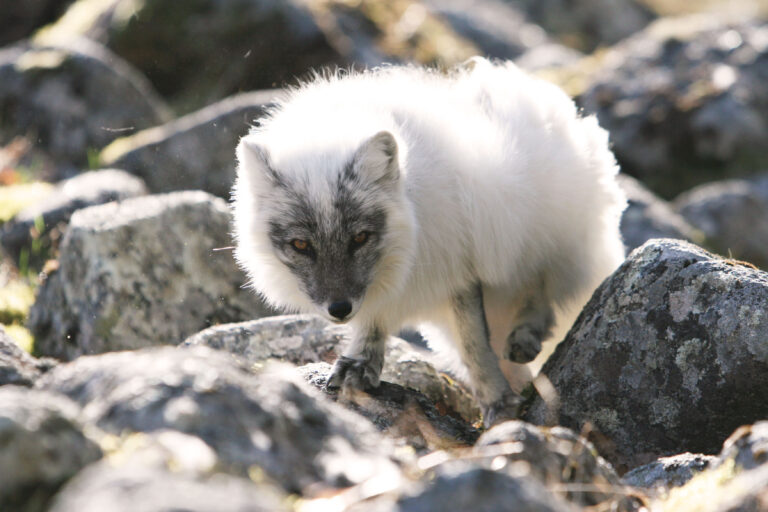Greetings from the wildlife park
Since last summer, many exciting things have happened at the wildlife park related to our animals and other ventures. For example, construction work has started at the wildlife park, we have gained new residents, there has been moves abroad and we have also been involved in various interesting projects.
Construction work
During the winter, construction work began on the wildlife park with the aim of improving the environment and comfort of our animals, animal caretakers and visitors alike. The new service road is ready, and new water and sewer pipelines, electricity and fibre connections will be completed shortly. The new waterlines will make it easier to care for predators in particular.
Since the area of the wildlife park is relatively large, construction work is carried out in stages with minimal inconvenience to humans or animals. Signs have been added to the park to make it easier to stay on the walkways, and places to enjoy snacks and toilets will also be in use during the construction work. A fine birdhouse exhibition for the bird area and an information shelter for roe deer will also be completed in the park during the spring, which will include information about roe deer and where you can observe the roe deer.
Saying hello to new friends and goodbye to old ones
During the year, new residents have moved to our bird area. The mouse owls, Saturday and Sunday, came to us from Ähtäri Zoo, the tawny owl brothers, Lehto and Lehmus, from Korkeasaari, and lastly, eagle owls, Otto and Ororvar, from Sweden.
Migration also happened the other way around, when two quail owls moved from us to Poland and Belgium. The move to Belgium was motivated by the desire for offspring to be released into natural parks to strengthen the quail owl population.
Reintroduction is usually carried out by several different parties, such as local authorities and wildlife parks/zoos, which together promote biodiversity. It is always a pleasure to be involved in such projects, and we hope that our quail owls will help to create a new and vibrant population in nature.
A new species in the wildlife park is the beech marten that moved to us from Korkeasaari Wildlife Hospital. Since the beech marten is a harmful foreign species, it is not possible to release it back into the wild. Because of this, it was decided to place it in park conditions. The beech marten was originally found in Kotka, but it is not known how it ended up there. Only individual observations of the beech marten have been made in Finland.
The wildlife park’s little ones
Spring brings news of babies, and for us that means that our moose, as well as roe and white-tailed deer and roe deer, calve every spring.
This spring, we are still anxiously waiting to see possible calves of the musk ox and the Lapland owl.
Moth collecting
We have also participated in the Finnish Environment Institute’s moth collection, which maps the diversity of species and the effects of environmental change on moths. The collection started here last summer, and the purpose of the project is to map the presence of moths in several locations across Finland. Moth monitoring serves as one of the indicators of biodiversity and provides fairly rapid information on changes in the environment.
More articles







